Comments / Questions (73)
![]() LENTZ wrote:
LENTZ wrote:
Comment télécharger le patron du modele choisi ( 351) Merci de votre réponse
25.06.2025 - 19:07DROPS Design answered:
Bonjour Mme Lentz, nos modèles peuvent uniquement être imprimés, mais, si vous utilisez une imprimante virtuelle, vous pourrez alors le sauvegarder sous format .pdf. Bon tricot!
26.06.2025 - 08:40
![]() Domenja wrote:
Domenja wrote:
Bonjour ! J'aime vraiment beaucoup ce modèle, encore plus depuis que je le tricote. C'est la 1ère fois que je tricote de haut en bas, mais avec toutes vos explications c'est très facile. J'approche de la fin du dos-devant et je suis intriguée par le grand nombre d'augmentations avant les côtes 2/2 (idem pour les manches). Sur les photos, je ne vois pas l'effet que cela produit. Merci pour votre réponse.
11.06.2025 - 15:50DROPS Design answered:
Bonjour Mme Domenja et merci; il faut davantage de mailles pour la même largeur quand on tricote des côtes avec des aiguilles 3 que du jersey avec des aiguilles 4, raison pour laquelle on augmente avant les côtes en bas du pull et en bas des manches, car on ne veut pas ici que les côtes resserrent trop le pull. Bon tricot!
11.06.2025 - 16:03
![]() Karolina wrote:
Karolina wrote:
Dlaczego przy karczku po zakończeniu ściągacza najpierw muszę zamknąć oczka żeby w następnym rzędzie dodać oczka?
29.04.2025 - 10:30DROPS Design answered:
Witaj Karolino, robimy to aby wykończenie dekoltu było bardziej wyodrębnione i lepiej się układało. Pozdrawiamy!
29.04.2025 - 13:25
![]() Chandrika Krishna wrote:
Chandrika Krishna wrote:
Hello I would like to know why an additional 60 stitches are added to the body just before starting the border.
17.04.2025 - 05:47DROPS Design answered:
Dear Chandrika, we add 60 stitches before starting the lower edge so that the rib is not too tight and the piece doesn't get smaller in the lower edge. Happy knitting!
20.04.2025 - 20:16
![]() G Weber wrote:
G Weber wrote:
I think there should be 56 stitches at the end of the sleeve for the smallest size? 44+12=56? That would also make more sense for the cuff, since it then ends evenly and not 2 right on 2 right...
03.04.2025 - 18:48
![]() Astrid Monica Christina Wejås Eriksson wrote:
Astrid Monica Christina Wejås Eriksson wrote:
Det står att det går åt 150 gram av mönsterfärgen, i storlek M men det går bara åt 100 gram så det bör ändras i mönstret
04.03.2025 - 19:45
![]() Astrid Monica Christina Wejås Eriksson wrote:
Astrid Monica Christina Wejås Eriksson wrote:
Ska man verkligen öka 64 maskor varvet innan resårstickningen?
04.03.2025 - 19:38DROPS Design answered:
Hej Astrid. Ja det stämmer. Resår är mer elastiskt än slätstickning och drar därför ihop sig mer. Genom att öka maskor före resåren undviker man att det blir en markant skillnad på bredden på resåren jämfört med resten av fram- och bakstycket. Mvh DROPS Design
05.03.2025 - 14:43
![]() Anna Gunilla Olsson wrote:
Anna Gunilla Olsson wrote:
Nybörjare Hur mycket garn behöver jag till Denim vår Genser DROPS Merino Extra Fine Large Kan noen her Strikke for meg? Hva er priset å sende i posten - Norge ink. Moms DROPS 196-23 #innercirclesweater DROPS Design: Modell u-869 Garngrupp B -------------------------------------- Mvh Anna
24.01.2025 - 09:18DROPS Design answered:
Hei Anna. Garnmengden i str. L finner du øverst i oppskriften, se under GARN TILL TRÖJA. Om du ønsker å få noen til å strikke genseren for deg anbefaler jeg deg f.eks å finne en Facebookside / nettside der noen tilbyr å strikke for andre, og avtale pris. Vi strikker ikke opp plagg for kunder. mvh DROPS Design
27.01.2025 - 09:45
![]() Aino Malin wrote:
Aino Malin wrote:
Lisäsin ohjeen mukaan silmukat kaarrokkeen ja kainaloiden alle kumpaankin sivuun. Mielestäni malli on outo ja pussimainen. Helmaan, ennen resoria en enää lisännyt ohjeen mukaisia silmukoita. Onko malli tarkoitettu pussimaiseksi? Miten voisin lähettää teille kuvan? Muut neulomani mallit ovat onnistuneet hyvin. Kiitos niistä! Olen tyytyväinen myös Drops-lankoihin.
21.01.2025 - 07:17DROPS Design answered:
Hei, tämä malli on hieman väljä. Voit lähettää kuvan neuleesta esim. dropsfan galleriaan. Löydät ohjeet kuvan lähettämiseen aloitussivun alareunasta.
21.02.2025 - 17:15
![]() Nathalie wrote:
Nathalie wrote:
Bonjour, quand vous dites d'augmenter tous les 6 rangs, c'est au 6eme rang ou au 7eme ? Merci
04.01.2025 - 22:41DROPS Design answered:
Bonjour Nathalie, pour les manches augmentez ainsi: *1 tour avec augmentations, 5 tours sans augmenter*, répétez de *à*, ainsi vous augmentez tous les 6 tours. Bon tricot!
06.01.2025 - 09:25
Inner Circle#innercirclesweater |
|||||||||||||||||||
 |
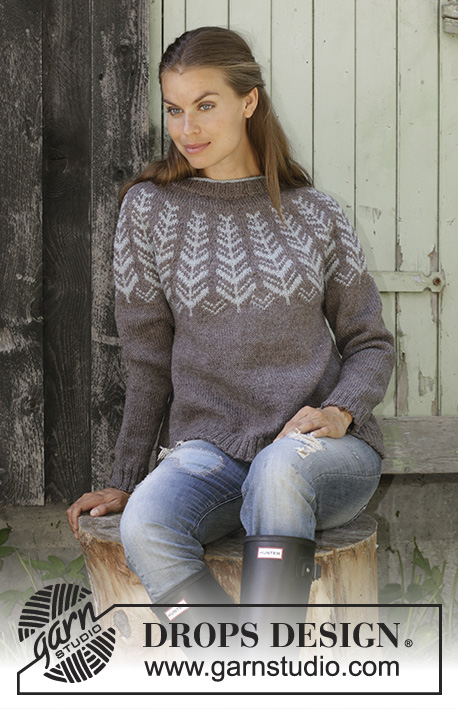 |
||||||||||||||||||
Knitted sweater with round yoke in DROPS Karisma or DROPS Merino Extra Fine. Piece is knitted top down with Nordic pattern. Size: S - XXXL Knitted hat in DROPS Karisma or DROPS Merino Extra Fine. Piece is knitted in the round with Nordic pattern.
DROPS 196-23 |
|||||||||||||||||||
|
---------------------------------------------------------- EXPLANATION FOR THE PATTERN: ---------------------------------------------------------- PATTERN: Sweater: See diagram A.1. Hat: See diagrams A.2 and A.3. Choose diagram for desired pattern. Work all stitches in stockinette stitch. KNITTING TIP (applies to multi-colored pattern): To avoid the knitting gauge to tighten when working pattern, it is important not to tighten the strands on back side of piece. Switch to a higher needle number when working pattern if the pattern is somewhat tight. ELEVATION: Insert a marker thread in first stitch on round (= mid back). Begin from right side and knit 11-11-12-13-13-14 stitches past marker thread, turn, tighten yarn and purl 22-22-24-26-26-28 stitches. Turn, tighten yarn and knit 33-33-36-39-39-42, turn, tighten yarn and purl 44-44-48-52-52-56. Turn, tighten yarn and knit 55-55-60-65-65-70, turn, tighten yarn and purl 66-66-72-78-78-84, turn and knit until beginning of round. DECREASE/INCREASE TIP (evenly): To calculate how to decrease/increase evenly, use the total number of stitches on row (e.g. 108 stitches) and divide stitches by number of decreased/increases to be done (e.g. 16) = 6.8. In this example work approx. every 6th and 7th stitch together. When increasing make 1 yarn over after every approx. 7th stitch. On next round work yarn overs twisted to avoid holes. INCREASE TIP (applies to sides of body): Work until 2 stitches remain before marker thread, make 1 yarn over, knit 4 (marker thread is in the middle of these 4 stitches), make 1 yarn over (= 2 stitches increased). On next round knit yarn overs twisted to avoid holes. DECREASE TIP (applies to sleeves): Decrease 1 stitch on each side of marker thread as follows: Work until 3 stitches remain before marker thread and knit 2 together, knit 2 (marker thread is between these stitches), slip 1 stitch knitwise, knit 1, pass slipped stitch over stitch worked. ---------------------------------------------------------- START THE PIECE HERE: ---------------------------------------------------------- SWEATER - SHORT OVERVIEW OF THE PIECE: Worked in the round on circular needle from mid back, work top down. Work sleeves in the round on double pointed needles/a short circular needle. NECK EDGE: Cast on 108-116-120-124-128-132 stitches on circular needle size 3 mm / US 2.5 with light gray green. Knit 1 round. Switch to beige brown. Now work rib = knit 2/purl 2 until piece measures 3 cm / 1". Knit 1 round while decreasing 16-19-19-20-20-20 stitches evenly - read DECREASE/INCREASE TIP = 92-97-101-104-108-112 stitches. Knit 1 round while increasing 20-22-32-36-39-42 stitches evenly = 112-119-133-140-147-154 stitches. Switch to circular needle size 4 mm / US 6. For better fit work an elevation at the back of neck so that yoke is somewhat higher on back piece. This elevation can be skipped, to make the neck the same at the front and back - read ELEVATION. YOKE: Now work pattern A.1 (= 7 stitches) 16-17-19-20-21-22 repetitions on round (begin at your size in diagram) - read KNITTING TIP and REMEMBER THE GAUGE! Continue pattern in the round like this. When entire A.1 has been worked vertically there is 288-306-342-360-378-396 stitches on round. Piece should now measure 23-24-24-24-24-24 cm / 9"-9⅜"-9⅜"-9⅜"-9⅜"-9⅜". Size S is now done, continue with next section below. Continue as follows in size M, L, XL, XXL and XXXL: Size M, L and XL: Work in stockinette stitch with beige brown until piece measures 25-27-28 cm / 9 ¾"-10⅝"-11" from cast-on edge, AT THE SAME TIME when piece measures 24-24-24 cm / 9⅜"-9⅜"-9⅜" increase 14-6-20 stitches evenly = 320-348-380 stitches. Continue with next section below. Size XXL and XXXL: Work in stockinette stitch with beige brown until piece measures 30-32 cm / 11 ¾"-12 ½" from cast-on edge, AT THE SAME TIME when piece measures 24-24 cm / 9⅜"-9⅜" increase 11-14 stitches evenly and when piece measures 27-29 cm / 10⅝"-11⅜" increase 11-14 stitches evenly = 400-424 stitches. Continue with next section. ALL SIZES: Work next row as follows: Work 42-46-50-56-60-65 stitches as before (= half back piece), slip the next 60-68-74-78-80-82 stitches on a stitch holder for sleeve, cast on 8-8-10-10-12-14 new stitches on row (= in the side under sleeve), work 84-92-100-112-120-130 stitches (= front piece), slip the next 60-68-74-78-80-82 stitches on a stitch holder for sleeve, cast on 8-8-10-10-12-14 new stitches on row (= in the side under sleeve) and work the 42-46-50-56-60-65 stitches as before (= left front piece). Finish body and sleeves separately. NOW MEASURE PIECE FROM HERE! BODY: = 184-200-220-244-264-288 stitches. Insert a marker thread in each side, in the middle of the 8-8-10-10-12-14 new stitches cast on under sleeve in each side = 92-100-110-122-132-144 stitches between marker threads on both front and back piece. Work stockinette stitch in the round with beige brown. When piece measures 2 cm / ¾" from division, increase 1 stitch on each side of both marker threads - read INCREASE TIP (= 4 stitches increased). Increase like this every 6th row (approx. 2 cm / ¾") 10 times in total in each side = 224-240-260-284-304-328 stitches. When piece measures 24-24-24-25-25-25 cm / 9⅜"-9⅜"-9⅜"-9 ¾"-9 ¾"-9 ¾" from division, knit 1 round while increasing 60-64-68-72-76-84 stitches evenly = 284-304-328-356-380-412 stitches. Switch to circular needle size 3 mm / US 2.5 and work rib = knit 2/purl 2 for 4 cm / 1½". Bind off with knit over knit and purl over purl but to avoid at tight bind-off edge make 1 yarn over after every 4th stitch (bind off yarn overs as stitches). Sweater measures approx. 54-56-58-60-62-64 cm / 21¼"-22"-22¾"-23⅝"-24⅜"-25¼" from shoulder and down. SLEEVE: Slip the 60-68-74-78-80-82 stitches from stitch holder in one side of piece on a short circular needle size 4 mm / US 6/double pointed needles and pick in addition up 1 stitch in each of the 8-8-10-10-12-14 new stitches cast on under sleeve = 68-76-84-88-92-96 stitches on needle. Insert 1 marker thread in the middle of the 8-8-10-10-12-14 stitches (= mid under sleeve). Work stockinette stitch in the round with beige brown. When piece measures 2 cm / ¾" from division, decrease 2 stitches mid under sleeve - read DECREASE TIP. Decrease like this every approx. 8th-6th-5th-4th-4th-4th round 12-15-18-19-20-21 times in total = 44-46-48-50-52-54 stitches. When sleeve measures 38-36-35-34-33-31 cm / 14⅞"-14⅛"-13 ¾"-13⅜"-13"-12⅛" from division (shorter measurements in the larger sizes because of longer yoke), knit 1 round while increasing 12-14-16-18-20-22 stitches evenly = 54-60-64-68-72-76 stitches. Switch to double pointed needles size 3 mm / US 2.5. Work rib in the round = knit 2/purl 2 for 4 cm / 1½". Bind off with knit over knit and purl over purl but to avoid at tight bind-off edge make 1 yarn over after every 4th stitch (bind off yarn overs as stitches). Sleeve measures approx. 42-40-39-38-37-35 cm / 16 ½"-15 ¾"-15 ¼"-14⅞"-14 ½"-13 ¾" from division and down. Work the other sleeve the same way. ---------------------------------------------------------- HAT - SHORT OVERVIEW OF THE GARMENT: Worked in the round on circular needle. Switch to double pointed needles when needed. There are 2 different diagrams for hat. If you want pattern with a big tree work according to diagram A.2 and if you want the pattern with a small tree work according to diagram A.3. Cast on 124 stitches on circular needle size 3 mm / US 2.5 with beige brown. Knit 1 round. Switch to light gray green. Work rib = knit 2/purl 2 for 4 cm / 1½". Switch to circular needle size 4 mm / US 6, knit 1 round while decreasing 16 stitches evenly - read INCREASE/DECREASE TIP (evenly) = 108 stitches. Now work pattern A.2 or A.3 – choose diagram for large or small tree (= 18 stitches) 6 times in total on round. REMEMBER THE GAUGE! When entire A.2/A.3 have been worked vertically, there are 12 stitches on row. Cut the yarn and pull it through the remaining stitches on needle, tighten tog and fasten. Hat measures approx. 24 cm/9½". |
|||||||||||||||||||
Diagram explanations |
|||||||||||||||||||
|
|||||||||||||||||||

|
|||||||||||||||||||
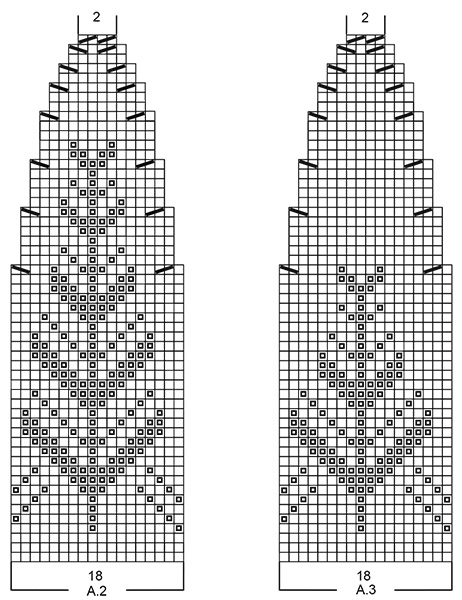
|
|||||||||||||||||||
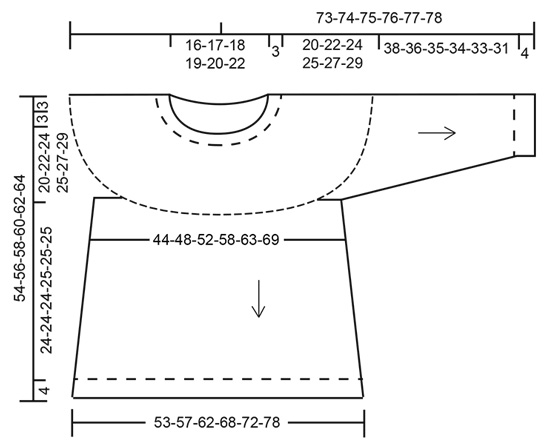
|
|||||||||||||||||||
Have you finished this pattern?Tag your pictures with #dropspattern #innercirclesweater or submit them to the #dropsfan gallery. Do you need help with this pattern?You'll find 28 tutorial videos, a Comments/Questions area and more by visiting the pattern on garnstudio.com. © 1982-2025 DROPS Design A/S. We reserve all rights. This document, including all its sub-sections, has copyrights. Read more about what you can do with our patterns at the bottom of each pattern on our site. |
|||||||||||||||||||







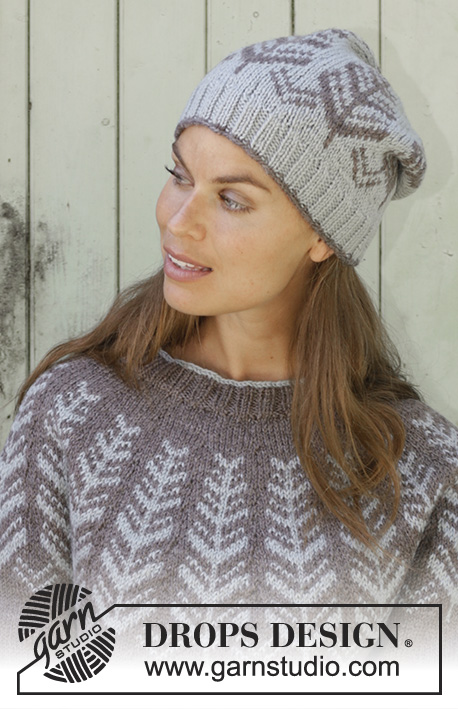


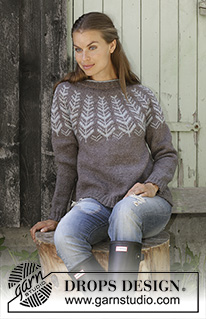
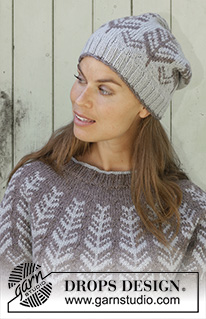






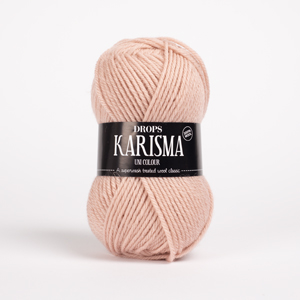

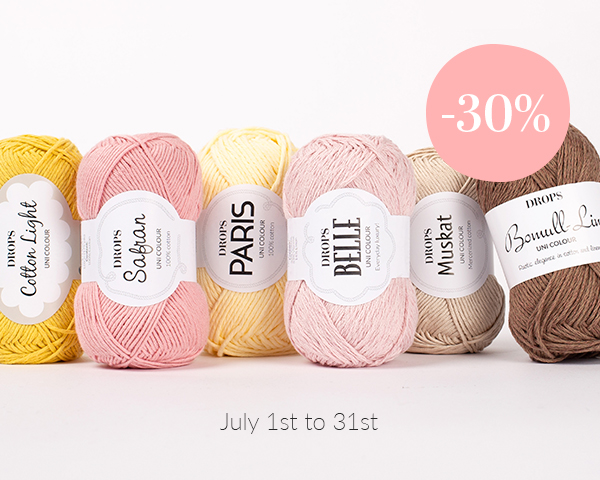
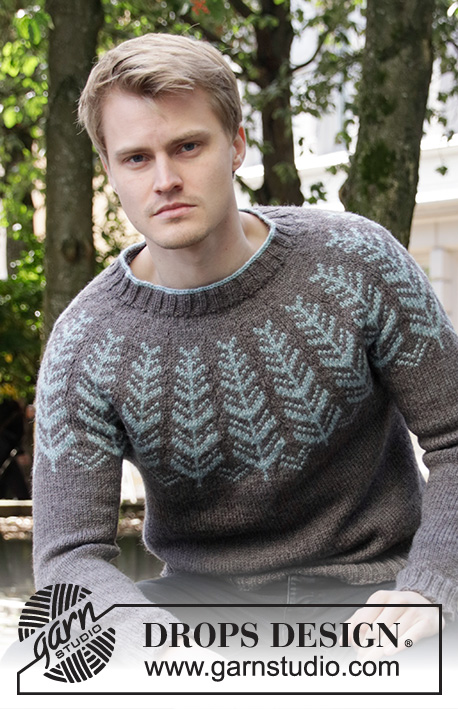


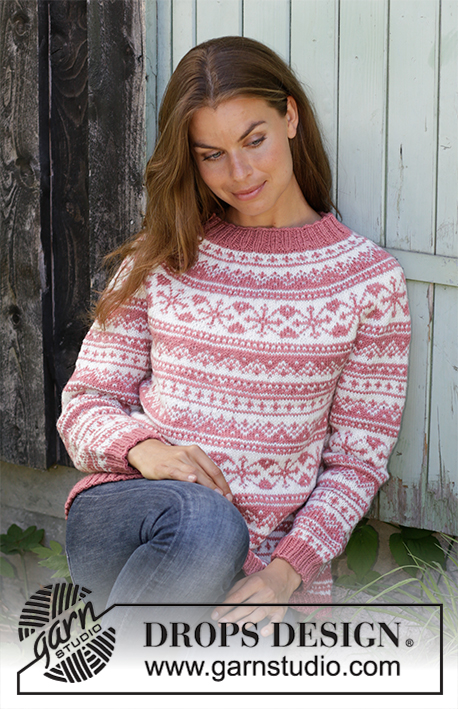















































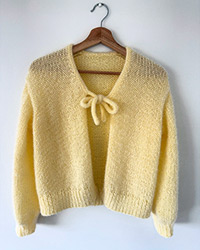
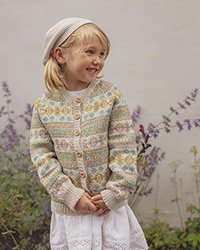
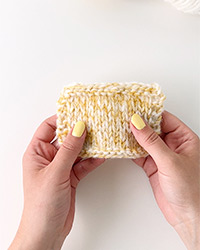
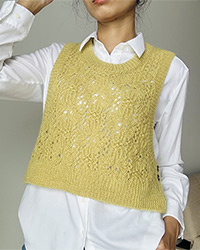

Post a comment to pattern DROPS 196-23
We would love to hear what you have to say about this pattern!
If you want to leave a question, please make sure you select the correct category in the form below, to speed up the answering process. Required fields are marked *.